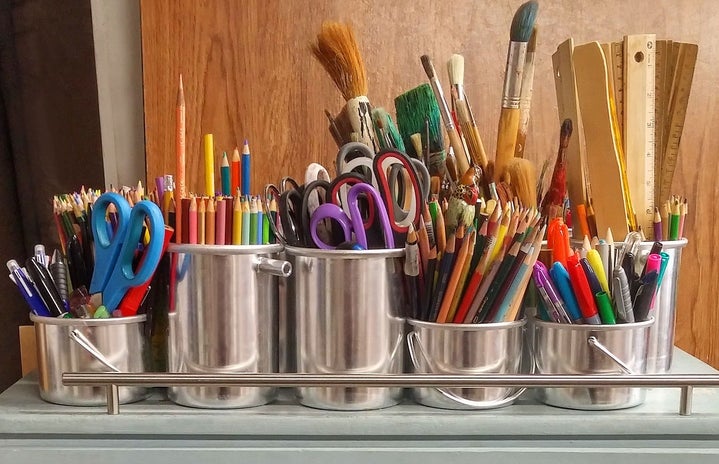“I CAN’T EVEN DRAW A STRAIGHT LINE.”
As an art major, my response to this all-too-common statement is that I, too, am incapable of drawing a straight line: I use a ruler, just like every other shaky-handed human being. While art is one of my main areas of study, I still majorly struggle in certain areas (PAINTING). Sometimes, as I’m working on a not-so-great piece, I just throw my hands up in the air and tell myself that today is not going to be a very productive art day.
That being said, we all have to begin somewhere. I began working toward improving my skills as a freshman in high school, and I’ve continued to make art since then on a fairly consistent basis. In the case of art, I would argue that drive and motivation are what help people succeed. If you want to improve, you will improve, as long as you invest the time, take the following tips in mind, and realize that there will be moments of frustration – as well as joy and fulfillment – along the way.
1. YouTube tutorials!
I watched a ton of YouTube videos when I was focusing more heavily on my basic skills. They are great for beginners, and I also love hearing an artist describe the process as they work.
2. Don’t feel obligated to “make it realistic.”
Photorealism never ceases to amaze me, but I always have to be realistic with myself and remember that most of the artists I see online and in social media have dedicated their lives to art. They don’t also have to juggle the social and academic balance of student life and the ever-present question of “what-am-I-going-to-do-with-my-life-after-college.” When drawing, I try my best to be accurate, but – especially when drawing without a reference – it’s more fun and relaxing to let your imagination take the reins.
3) Draw from life when possible.
Drawing and/or painting still-lifes are the best for learning how light and shadows play together, and how perspective and angles work. It may not be the most exciting activity, but you have the ability to put together any scene that you desire. You can even rope in a friend and have them model for you (and then gift them with the finished product for Christmas, depending on the outcome!).
4) Document your progress!
In the moment, a certain sketch might be driving you crazy, but it’s incredibly rewarding to be able to look at a piece that made three months prior and realize how much improvement you made. Check out this website for some inspiring progress shots!
https://www.demilked.com/before-after-drawings-drawing-artist-progress/
5) Drawing is a gateway to painting, but painting is not necessarily a gateway to drawing.
To me, drawing is the fundamental artistic skill that gives you the knowledge needed to move to other mediums. You learn how to use line, shading, light, shapes, perspective – the whole shebang! However, you should play with whatever medium you enjoy the most: paint, pastels, clay, whatever. Just work on those basic skills first (general to specific, as my prof says!), and more tools will become available to you.
6) It takes a while – maybe forever? – to find “your voice.”
Just as in writing, finding your “artistic voice” is tricky, especially when you have other artists who you look up to and want to emulate. Personally, I sometimes need to step away from social media and remember that I’m not creating art in order to compare it to the work of others. At the end of the day, I’m just making art for myself, and to communicate ideas that I believe are important.

